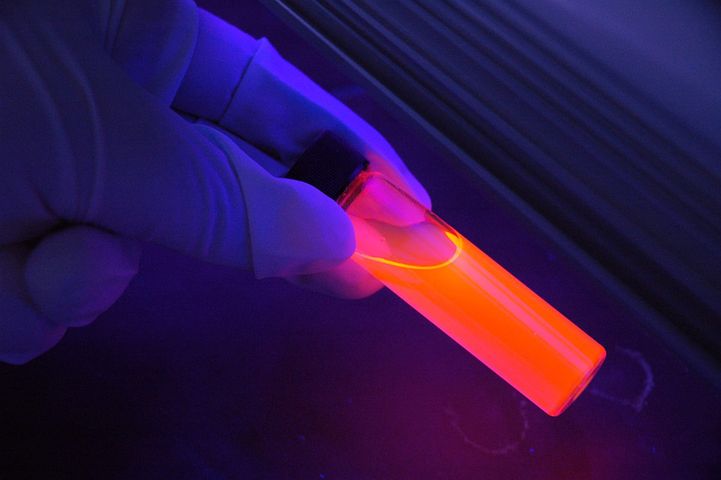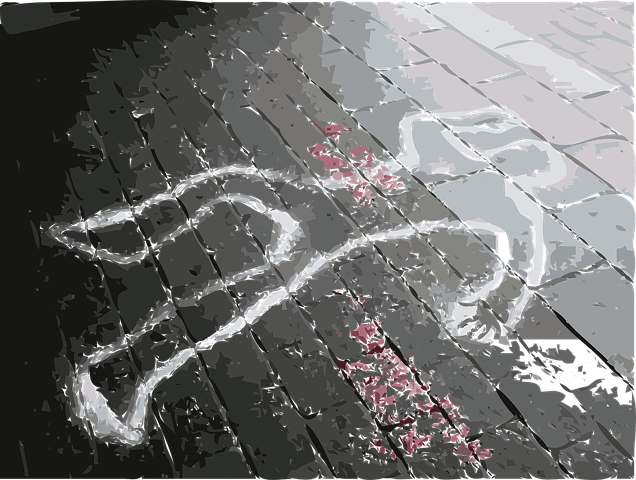FORENSIC SCIENCE
An Introduction
Forensic science is the application of a broad Spectrum of science to answer questions of interest to a legal system which may be In relation to a crime or a civil action In modern use it can be considered as forensics which is the synonym for “legal” or “related to courts”. Tools of Forensic Science:
Commonly used are:
DNA fingerprinting
DNA testing
Foot print analysis .
4 Ballastics .
1 .DNA Fingerprinting: The ultimate Identification test introduction
Every year in court cases all over the world the ability to establish a person’s identity' lS essential for a just discussion. Genetics has come to the rescue of the courts and now the following questions are routinely asked in the courts. Is the drop of blood found at the crime scene from suspect on trail? Who is the child’s father? Until recently there was no foolproof test. In a criminal case, if there was no identifiable finger print left at the crime scene, there was no case. Blood tests can determine who is not the parent, not who is. A test has now been developed that provides hundred percent positive identification. The test is called DNA finger printing which can show conclusively whether the genetic material in a drop of blood matches that of the suspect or it can be used to solve the paternity case.
DNA fingerprinting is a process that involves the identifying and evaluating of a person’s genetic material (DNA).lt is the technique of ascertaining relationships with persons. British genetics Alec Jeffreys developed the technique of DNA fingerprinting in 1984.

The technique of DNA finger printing relies on development from recombinant DNA technology and allows an examination of each individual’s unique genetic blueprint-DNA. It is based on the fact that the DNA of each individual is interrupted by a series of identical DNA sequence called repetitive DNA or tandem repeats. The pattern, length and number of these repeats are unique for each individual. Jeffreys developed a series of DNA probes which are short pieces of DNA that seek out any specific sequence they match and base pair with that sequence. Such molecular probes are used to detect the unique repetitive DNA patterns characteristics of.each individual. The DNA fingerprint consists of the patterns of DNA fragments obtained in restriction analysis of Human DNA. Every person has unique DNA which does not match with any other individual.
DNA fingerprinting can be done either through blood samples from a vein, or the use of a heel prick. DNA fingerprinting done through a vein sample is no different than getting a regular blood test done. A needle is inserted into a vein, and blood drawn into a sample container. The blood sample can then be sent off to a laboratory for DNA testing.
A less invasive way to perform a DNA fingerprinting is through a heel stick. The heel stick method is most commonly used when getting a DNA sample from a young child or infant. This provides a safe alternative to blood being drawn from a young child, and also limits pain and discomfort. A heel prick is done by pricking the heel with a lancet. The blood that is expelled from the wound is collected and sent to a DNA laboratory.
For DNA fingerprinting to be done for crime scene forensics or body identification, DNA samples can also be obtained through dried blood, semen, saliva, urine, hair, bone, teeth and skin. Bone and teeth DNA sampling is usually only reserved for body’s that the skin has reached to great of a level of decompositionto give back an accurate result
The process of DNA finger printing has the following steps:
DNA Is purified from a small sample of blood, semen or other DNA bearing cell and digested into smaller fragments with restriction endonucleases.
The fragment are separated by agarose gel electrophoresis.
The separated fragments are transferred to a nylon membrane by the technique of southern blotting.
The DNA probes labeled with radioactive material are added to a solution containing the nylon membrane.
Whenever the probes fit a band containing repetitive DNA sequences, they attach.
The X-ray film is pressed against the nylon filter and exposed at bands carrying the radioactive probes attached to the fragments
The patterns of bands obtained on the film Is hundred percent unique for each person, except for identical twins who would have the same pattern.
There are various ways to test DNA. One very common method used in various settings, including forensic and paternity testing labs, is polymerase chain reaction or PCR and Restriction length Polymorphism (RFLP) Using PCR method, DNA Is extracted from sample cells and primers are used to locate the sequence of
interest on the DNA strand. This sequence is then amplified to create many million and even billion of copies.
Polymerase chain reaction is used to amplify a sequence of DNA using a pair of oligonucleotide primers each complementary to one end of DNA target sequence. These are extracted towards each other by thermostable DNA polymerase in a reaction cycle of three steps: denaturation, primer annealing and polymerization. The reaction cycle comprises a 95°C step to denature the duplex (separate two DNA strands) an annealing step of around 55°C to allow the primers to bind and a 72°C 0 polymerization step. Mg2+ and d NTPs are required in addition to primers, buffers, and enzyme. in the case of paternity testing, somatic, or body cells from the possible father are obtained by taking a swab of the inner lining of the father’s mouth. The DNA is extracted from the cells and is then amplified, creating many copies. These copies are then compared to those of the offspring to see if there is a close match. Although PCR is less time-consuming and cheaper than another method called RFLP, it is very suspectible to contamination and care must be exercised during the entire testing process.
In RFLP, or Restriction Fragment Length Polymorphism, a restriction enzyme is used. Obtained by bacteria that can "cut" DNA at a particular location, restriction enzymes cut many copies of the DNA Sequence of interest. The sequence is then separated according to size using gel electrophoresis. Next, “blotting” is performed in which a film is applied to the gel and stained allowing the different bars, representing different sequences, to be seen. This prevents any further migration of the DNA sequences in the gel. A DNA probe is then attached to the sequence of interest.
As in FOR, the DNA copies are compared to others in the population to determine if there are a “match.” Rather than just one person's DNA, in the case of paternity testing, DNA from a large population needs to be used in order to effectively compare the lab sample to those in the population. This, along with the increased cost and time required, is the reason that RFLP is no longer widely used as it had been.
Cell Sample DNA comparison extracted DNA cleavage of DNA by restriction enzyme binding of radioactive DNA probe to specific DNA fragments memberane . Washed free excess probe -X-ray film '
used to detect radioactive pattern transfer to a membrane (Southern blot) separation of DNA fragments by electrophoresis A B
Applications of DNA fingerprinting;
DNA fingerprinting has a host of different uses:
A Paternity testing. The test lOr paternity can be done for identifying the true (biological) father. The DNA bands of child should match the DNA prints of the biological father.
b. Crime Scene forensic:. Identification of criminal is made possible by DNA fingerprinting. Here DNA finger prints from suspects and from blood or hair or semen is picked up from the site of crime are prepared and compared. The DNA fingerprint of the person matching the one obtained from the site of crime can give the clue to the actual crime.
c. To identify the decayed or destroyed body.
d. To verify whether the hopeful immigrant is ,as he or she claims, really a close relative or already established resident.
e. To identify social groups to rewrite biological evolution ,
f. Lately DNA fingerprinting has further to create a DNA database.
- Ballistics
it is the science of mechanics that deals with the flight, behavior, and effects of projectiles, especially bullets, gravity bombs, rockets, or the like; the science or art of designing and accelerating projectiles so as to achieve a desired performance.
a. Gun ballistics . _
Gun ballistics is the study of projectIles from the time of shooting to the time of impact with the target
b. Forensic ballistics
Forensic ballistics involves analysis of bullets and bullet impacts to determine
information of use to a court or other part of a legal system. Ballistic fingerprinting involves analyzing firearm, ammunition, and tool mark evidence in order to establish whether a certain firearm or tool was used in the commission of a crime. .
- Footprints Analysis
Foot prints are the impressions or images left behind by a person walking, while “shoeprints” is the specific term for prints made by shoes. They may either be indentations in the ground or something placed onto the surface that was stuck to the bottom of the foot.
Footprints can be followed when tracking during a hunt or can provide evidence of activities.
If shoes are worn frequently without socks, footprints become visible over time on their insoles.
Footprints in detective work
The print left behind at a crime scene can give vital evidence to the perpetrator of the crime. Shoes have many different prints based on the sole design and the wear that it has received this can help to identify suspects. Photographs or castings of footprints can be taken to preserve the finding. Analysis of footprints and shoeprints is a specialist part of forensic science Some detective work is relatively immediate, with criminals being tracked by the footprints they left In the snow leading from the crime scene to their home or hiding place. Footprints can also allow the detective to find the approximate height by the size of the foot, footprint and shoeprint. The foot tends to be approximately 15% of the person’s average height. Individualistic characteristics of the footprints like numerous creases, flatfoot character, horizontal and vertical ridges, corns, deformities etc, can help the forensic scientist in cases pertaining to criminal identification. In some forensic cases, the need may also arise to estimate body weight from the size of the footprints
REFRENCES:
I Encycl0pedia, Britanica
2 www. google. com.
3 Molecular Biology P S. Verma & V K. Agarwal.
4 Instant notes on Molecular Biology 2nd edition P. C. Turner, A. G. Mclennan, AD Bats & M.R.H. White
5 Plant Biotechnology S. Ignacimuthus


NICE FRIEND
Nice one @lalu24,
Biotechnology has given so many different ways to find the convict.
appreciated....just keep it up
cheers :)
Happy Birthday Krish !
You got a 0.98% upvote from @postpromoter courtesy of @lalu24!
Want to promote your posts too? Check out the Steem Bot Tracker website for more info. If you would like to support the development of @postpromoter and the bot tracker please vote for @yabapmatt for witness!